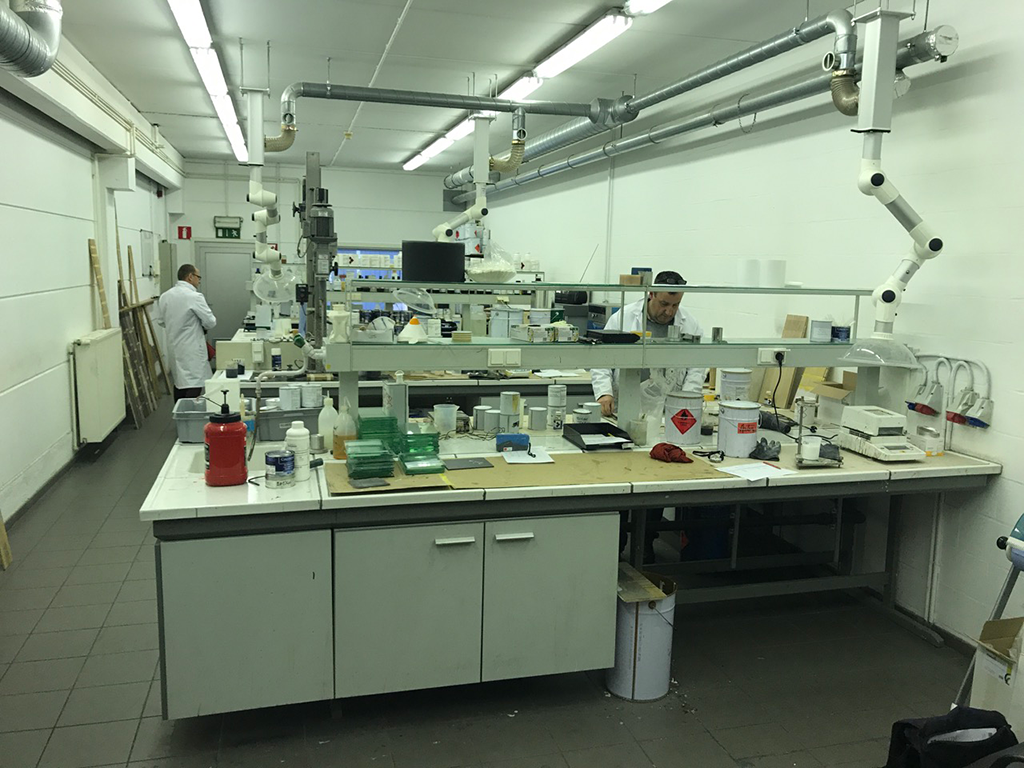REACTIVE STAINS

Reactive stains (sometimes called ‘active stains’ or ‘chemical stains’) take advantage of the naturally occurring compounds in wood to create new colors. Rather than relying on pigments like traditional stains, reactive stains employ carefully selected chemicals that interact with the tannins, extractives, sugars or cellulose in the wood to change the color from within. Reactive stains are an excellent way of creating an aged look in new wood, as they can replicate the oxidative processes that occur in wood when it is exposed to the elements.
With all reactive color processes such as fuming/smoking, carbonization, and reactive stains, tannin and sugar differences between boards result in color differences. But with reactive stains, the grain direction also matters. The degree of reaction depends on how much reactive stain is applied and absorbed into the wood. Depending on the grain structure, some areas absorb more than others. As a result, reactive stains serve to highlight the natural structures in the wood, enhancing the perception that the wood was colored by nature. The depth and complexity that results really shines when you compare a board treated with reactive stains to a board stained by traditional methods. There simply is no comparison. Reactive stains look much more natural, crisp and subtle than traditional stains that rely on pigments that cover over the wood’s natural color. They generally show more color variation, but it’s a gorgeous variation.
To some, the terms ‘reactive stain’ or ‘chemical stain’ bring up concerns that there may be ingredients in these stains that could be harmful to human health. Rest assured, this is not the case. Most reactive stains are just different kinds of salts dissolved in water. One of the most common ones, iron chloride, is actually used in the treatment of drinking water. A traditional homemade reactive stain that some wood floor finishers still use today is a solution of steel wool dissolved in vinegar. Today, we use more advanced formulas that give us better stability and consistency, but the basic building blocks are still the same and completely safe.
At Monarch Plank, we have been at the forefront of reactive stain technology for much longer than most of the market, and have learned many important lessons. The stains must be freshly mixed, applied with specialized machinery to carefully conditioned wood that is sourced from just one forest region, and dried for extended periods under tightly controlled conditions. In some cases, the stains must then be washed off or neutralized to stop the reaction from progressing too far. No other company has the facilities, the know-how, or the sourcing infrastructure to control things to this degree. We are proud to have done the hard work we’ve done and feel that it shows in the final product, but we’ll let you be the judge!
Leave a comment
Comments will be approved before showing up.




